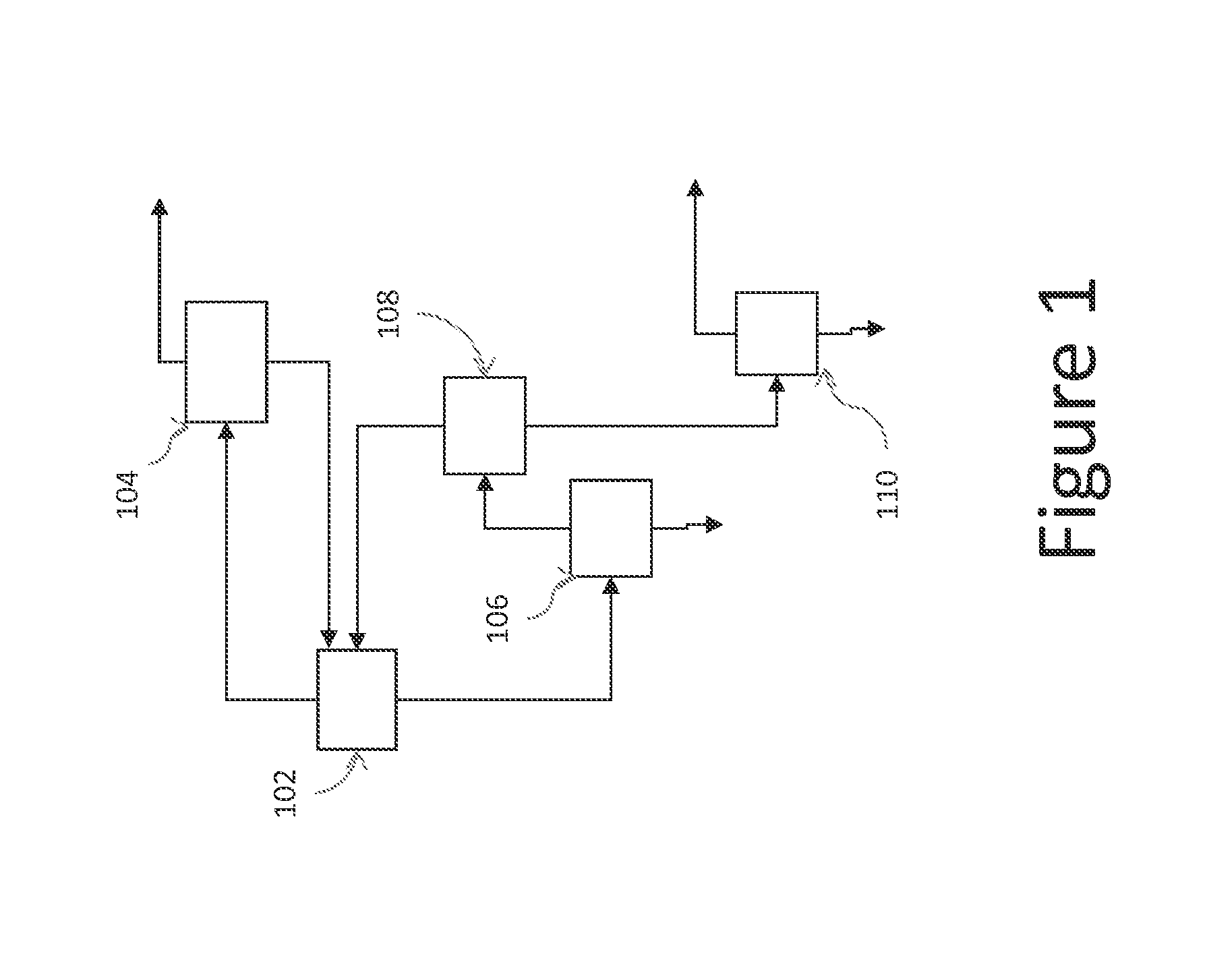Process for the production of chlorinated propanes
- Summary
- Abstract
- Description
- Claims
- Application Information
AI Technical Summary
Benefits of technology
Problems solved by technology
Method used
Image
Examples
example i
Chlorination of 1,1,1,3-tetrachloropropane to Using AlCl3 vs. FeCl3
[0043]In a glove box, the base of a 100 mL Parr reactor is charged with 100 mg of either FeCl3 or AlCl3, and methylene chloride (45 mL). The reactor is sealed, stirring is initiated (900 rpm) and the reactor is pressurized with N2 (˜140 psig) and vented. Chlorine (30% in N2) is passed through the reactor for 35 min at a reactor pressure of 125 psig. The shot tank is charged with 1,1,1,3-tetrachloropropane (1 mL) and methylene chloride (9 mL). Chlorine is then stopped, and the reactor is heated to 50° C. and the reactor pressure is adjusted to ˜125 psig. The shot tank is added and the reactor is sampled every two minutes for 10 minutes and then at 30 and 60 minutes. The samples are removed from the box and quenched with saturated aqueous sodium bicarbonate. The organic layer is separated. Analysis by 1H NMR spectroscopy in deuterated chloroform indicates full conversion of 1,1,1,3-tetrachloropropane by the first samp...
PUM
| Property | Measurement | Unit |
|---|---|---|
| Temperature | aaaaa | aaaaa |
| Length | aaaaa | aaaaa |
| Fraction | aaaaa | aaaaa |
Abstract
Description
Claims
Application Information
 Login to View More
Login to View More - R&D
- Intellectual Property
- Life Sciences
- Materials
- Tech Scout
- Unparalleled Data Quality
- Higher Quality Content
- 60% Fewer Hallucinations
Browse by: Latest US Patents, China's latest patents, Technical Efficacy Thesaurus, Application Domain, Technology Topic, Popular Technical Reports.
© 2025 PatSnap. All rights reserved.Legal|Privacy policy|Modern Slavery Act Transparency Statement|Sitemap|About US| Contact US: help@patsnap.com

